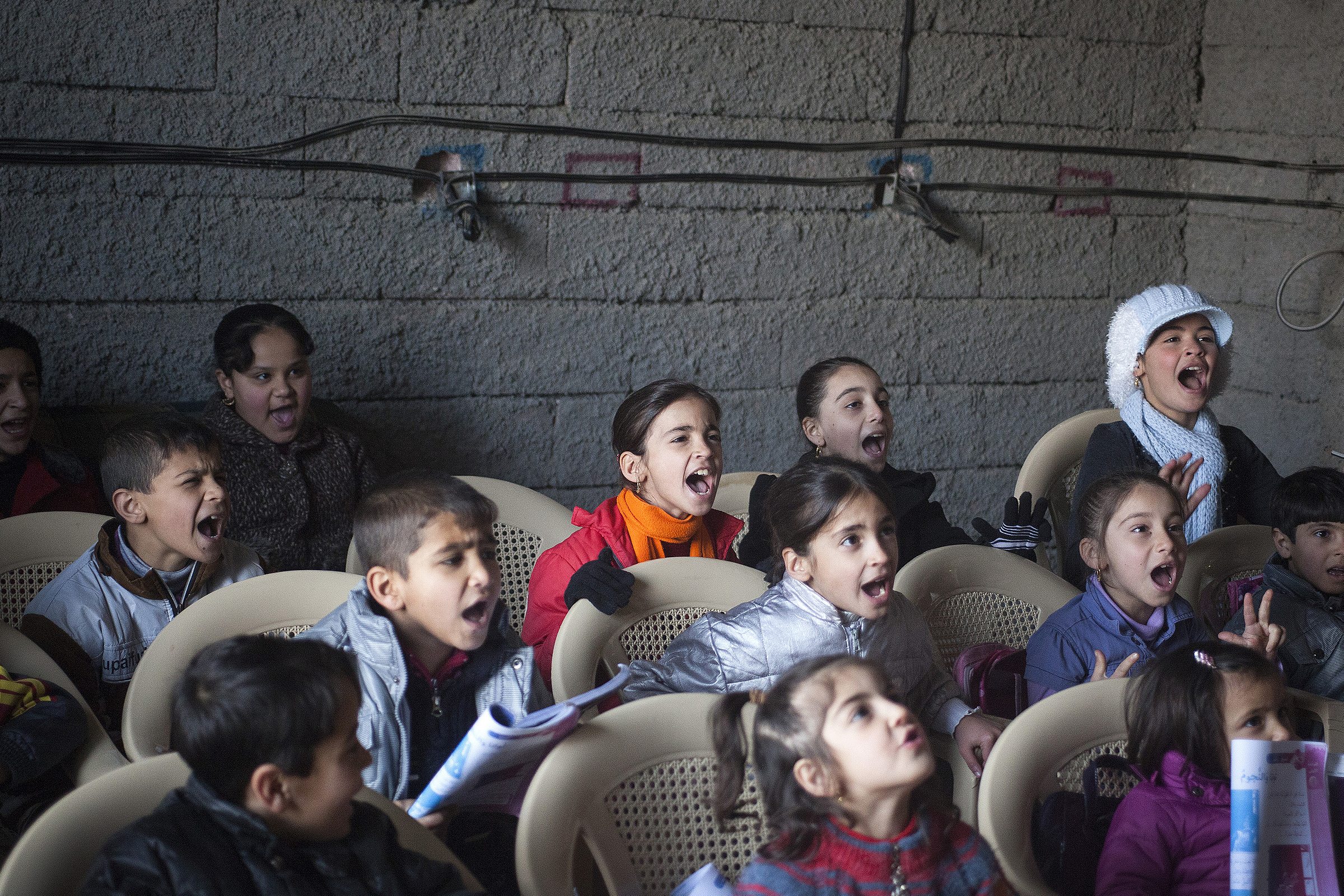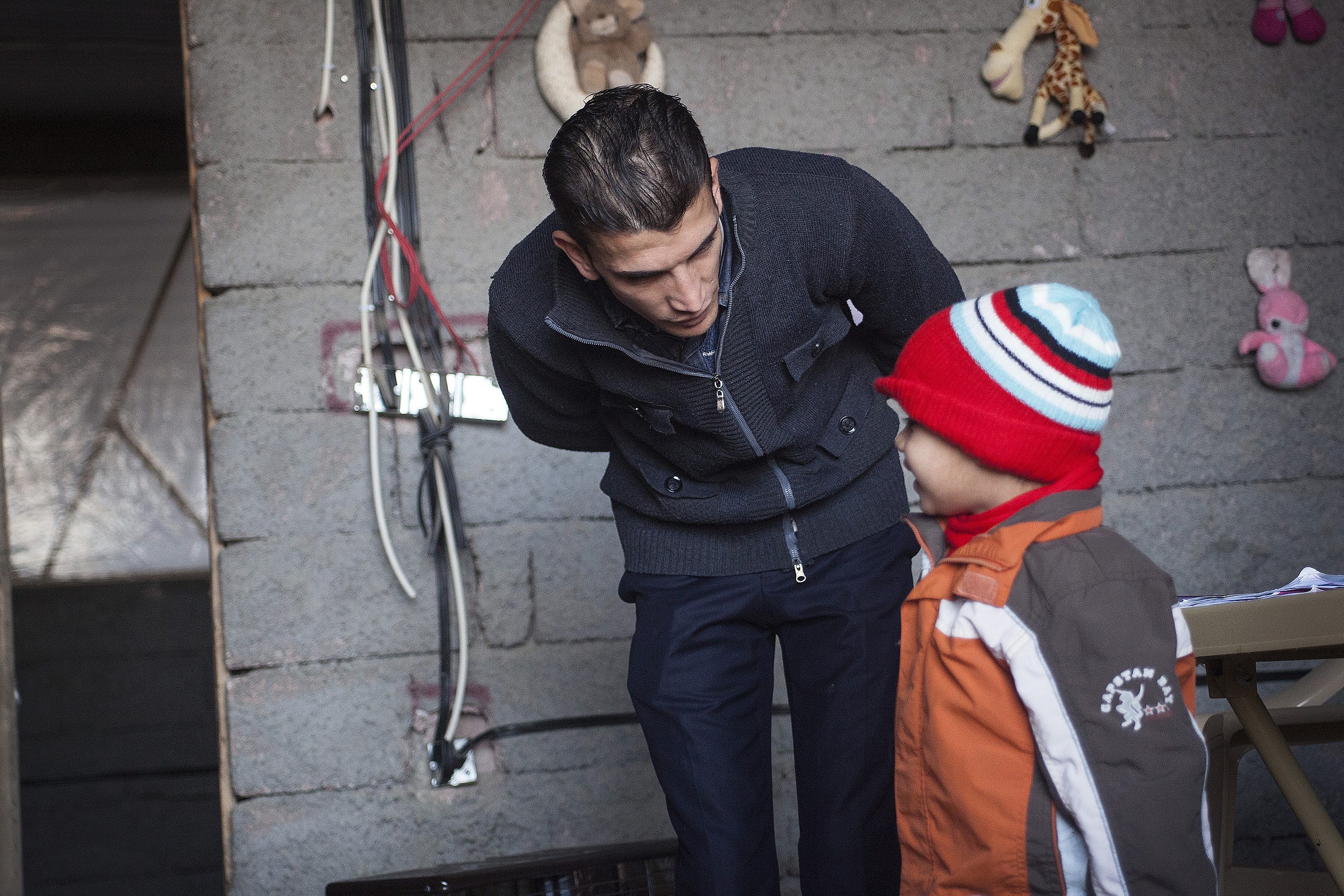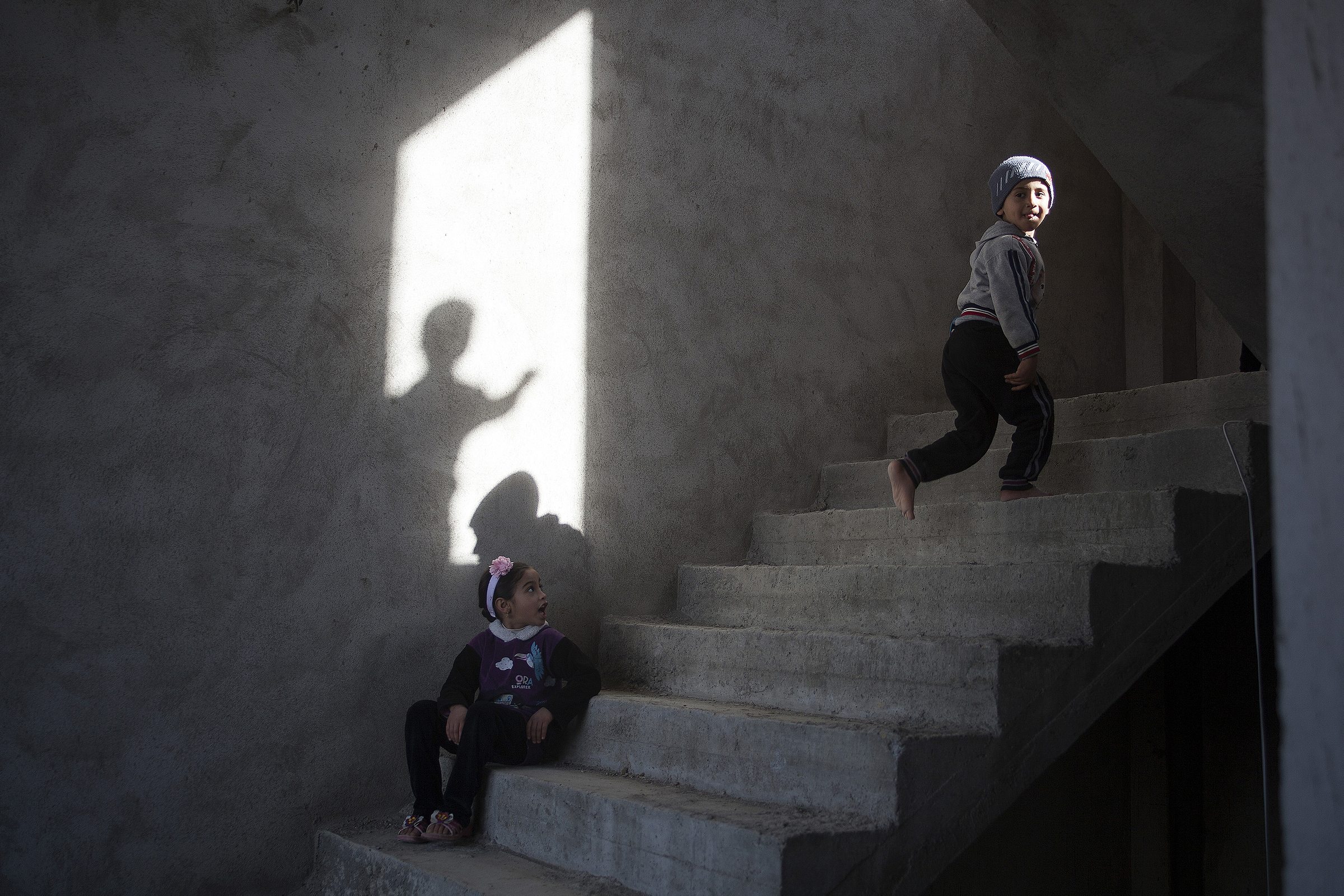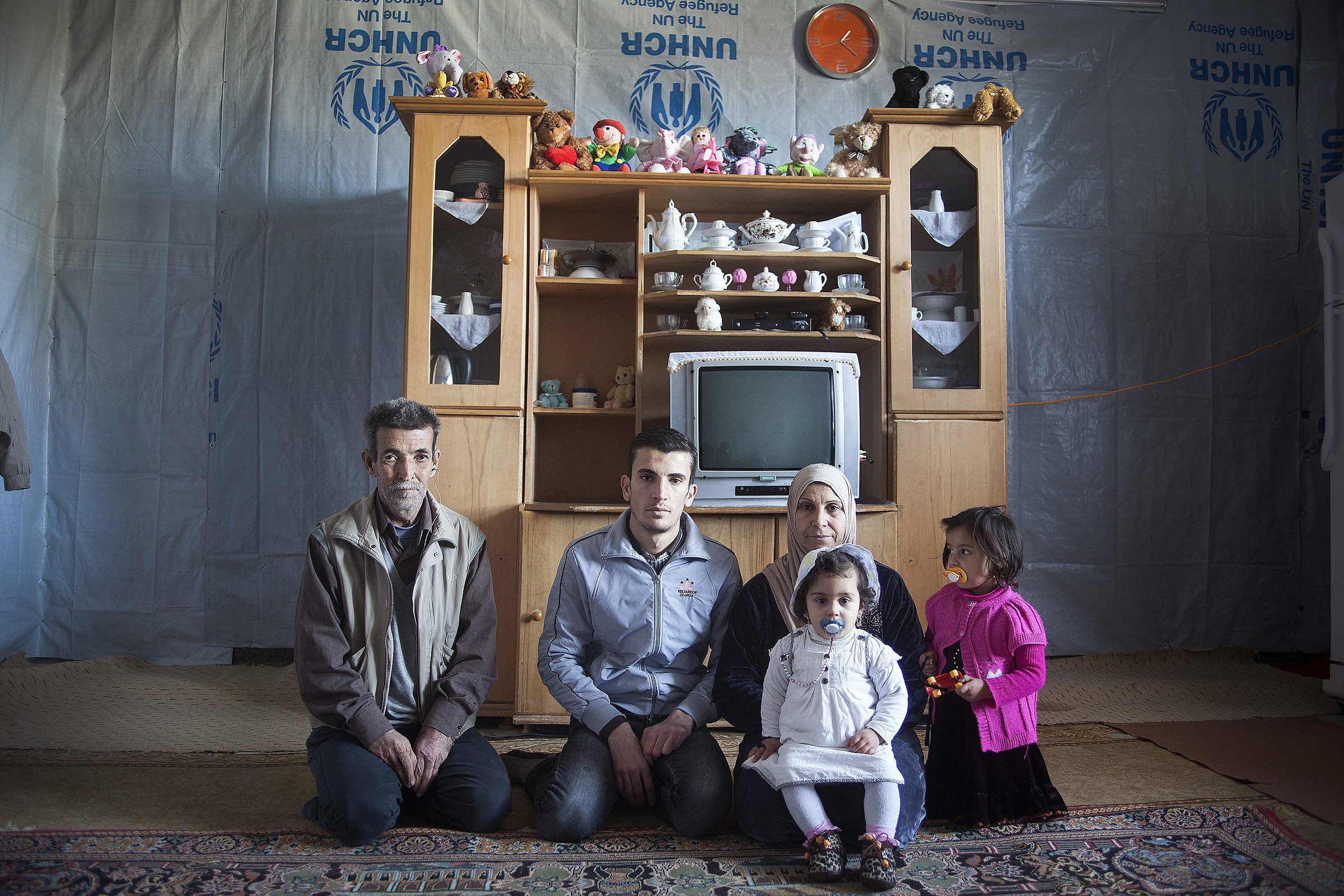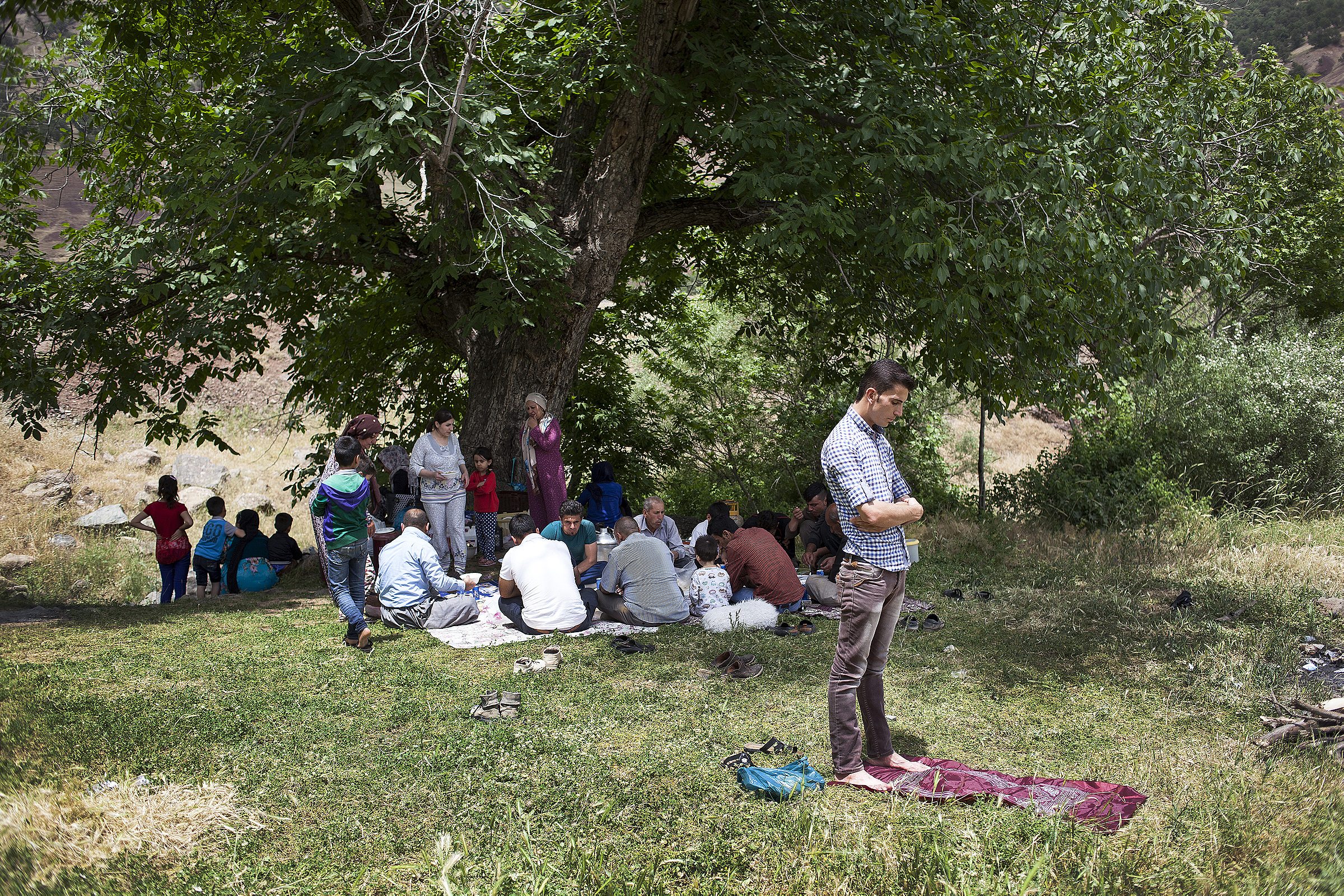Over the past year, photographers from the agency Metrography have been working on a collaborative project that documents the crisis of displacement inside Iraqi Kurdistan.
There is only one teacher in this school. His name is Mohammed, and at 23 years old, he’s barely out of university himself. In fact, he never got to finish his studies in Quranic Science because on the morning of August 3rd, 2014, ISIS attacked his home city of Sinjar, in the north of Iraq.
That day, Mohammed managed to escape with his extended family. The weather was unbearably hot. There were about 70 of them, including old men and women and babies. Unlike the 40,000 Yazidis who were trapped in the mountains for days without food and water, Mohammed and his family, Shia Muslims, were able to drive into the Kurdish region of Iraq. They were among the 200,000 people that managed to escape Sinjar.
Today, the young man lives in an unfinished building in Sitak, a small city close to Sulaymaniyah. This is where he started the makeshift school that I met him in. Thanks to the support of STEP, a small British NGO, he teaches math, reading and writing in both Arabic and Kurdish to the children who live upstairs.
I was drawn to Mohammed’s story because I wanted to show the diversity of the Sinjar crisis. A lot of people think of it as a purely Yazidi issue, so it was important for me to document the different kinds of people persecuted by ISIS. I was also moved by his will to do something positive. There are thousands of tragic stories in Iraqi Kurdistan right now. His felt different.

Over the past year, I have been working with other local photographers from the agency Metrography on Map of Displacement. This collaborative project accounts the crisis of displacement inside Iraqi Kurdistan, where more than 1.5 million people have found shelter.
Many of these photographers, like me, have first hand experience in displacement. In 1989, the year after I was born, the Ba’athist regime moved my family from Rania to Xabat on the outskirts of Mosul. Two years later we fled to Iran after the failed Kurdish uprising against Saddam Hussein. Today, even though Mohammed and I are both Kurds, we have very different lives. I have my home to go back to at the end of the day.
What Mohammed and his family want more than anything is to return to Sinjar. In the meantime, he’s concentrating on teaching the children as a way to cope with the trauma. “The important thing is that the children learn something,” he says. “I focus on activities such as drawing, sports and hymns to distract them from the current situation and let them know that life goes on.”
